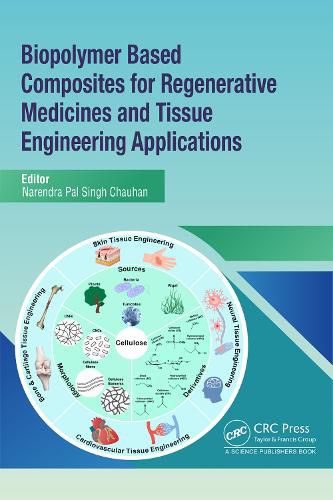Readings Newsletter
Become a Readings Member to make your shopping experience even easier.
Sign in or sign up for free!
You’re not far away from qualifying for FREE standard shipping within Australia
You’ve qualified for FREE standard shipping within Australia
The cart is loading…






Biopolymer-based composites have emerged as pivotal materials in regenerative medicine and tissue engineering, offering biomimetic scaffolds that support cellular growth, differentiation, and tissue regeneration. These composites integrate natural polymers with bioactive fillers to mimic the extracellular matrix (ECM), providing structural and biochemical cues essential for tissue repair. In this book, different types of biopolymer composites based on keratin nanofiber, cellulose, chitosan, collagen, gelatin, Hyaluronic acid, starch-based composites, alginate, microbial exopolysaccharides, polyhydroxyakanoate, silk fibroin, dextran and pectin are discussed in detail. It is believed that this work will be of general interest to organic chemists, materials scientists, chemical engineers, polymer scientists and technologists.
$9.00 standard shipping within Australia
FREE standard shipping within Australia for orders over $100.00
Express & International shipping calculated at checkout
Stock availability can be subject to change without notice. We recommend calling the shop or contacting our online team to check availability of low stock items. Please see our Shopping Online page for more details.
Biopolymer-based composites have emerged as pivotal materials in regenerative medicine and tissue engineering, offering biomimetic scaffolds that support cellular growth, differentiation, and tissue regeneration. These composites integrate natural polymers with bioactive fillers to mimic the extracellular matrix (ECM), providing structural and biochemical cues essential for tissue repair. In this book, different types of biopolymer composites based on keratin nanofiber, cellulose, chitosan, collagen, gelatin, Hyaluronic acid, starch-based composites, alginate, microbial exopolysaccharides, polyhydroxyakanoate, silk fibroin, dextran and pectin are discussed in detail. It is believed that this work will be of general interest to organic chemists, materials scientists, chemical engineers, polymer scientists and technologists.